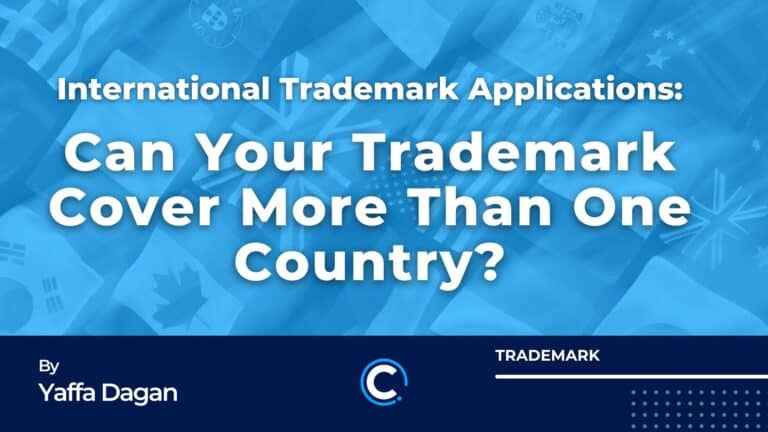
Selling on Amazon can come with substantial financial investments. Purchasing the inventory, shipping the goods, paying a photographer, a designer, a copywriter… And that’s before the PPC costs start piling up, to launch your product.
If you sell your product in multiple countries, the costs of protecting your trademark in each territory can be quite burdensome. The following article will focus on a budget-friendly legal solution, for sellers who sell in multiple countries: filing an “international” trademark application, instead of filing separate national trademark applications for each individual territory.
What is an international application? Is it truly international?
The term “international application” can be misleading, as the trademark is not really “international”, unless you paid for ALL the countries.
Rather, it is a single application filed through the World Intellectual Property Organization (WIPO) that allows for coverage in one or more territories under one application, when each country designated involves an additional fee. In other words: instead of filing your trademark in each country separately, with attorneys in each country, you file ONE application with WIPO, and WIPO directs your application to the countries you chose (and paid for!).
What’s the advantage of an “International” Trademark Applications?
There are over 100 countries that can be designated through the international application process. This method may be more cost-effective than filing separate national applications for each territory, especially if you intend to cover more than 3-4 countries. The costs for filing the international application will include a basic fixed filing fee and additional official fees per designated country. You won’t need to pay for an attorney in each country, unless your application encounters a provisional refusal. This is where you can save significant costs.
In addition, the maintenance of the international registration (every 10 years), and the recordals of any changes in ownership will be handled directly through WIPO in a simpler, faster and cheaper procedure that will save you time, money and effort. This will eliminate the need to pay associate fees and provide specific documents according to the requirements of the different territories.
How does the “International” Trademark Applications work?
Once you file your trademark application, WIPO will begin a formal examination process and assign an international registration number and certificate. This is just the first step, as WIPO will then forward your application to the local trademark offices in the countries you’ve designated for further examination.
You will then need to wait for approval of the application and registration in each of the designated countries. If all goes smoothly- you’ll receive a registration from the designated countries, typically within 12 months.
When is it best to file an international application rather than the "regular" National filings?
- Cost-effectiveness and number of territories:
If your business operates in a few regions, such as the US and a couple of European countries, it may be more cost-efficient to file individual applications through the USPTO and EUIPO. This is because an international application requires a flat fee, regardless of the number of territories designated in the application.
However, if your business plans to expand to multiple territories, filing an international application can save you the cost of hiring local attorneys for individual filings. Make sure you share your plans with your attorneys, so that they can determine the most financially sound filing strategy, taking into account your specific needs and other legal factors.
- Complexity and nature of the list of goods and
If your products are not standard and require a more complex description, such as software, hardware, or online platforms, we often suggest filing an international application to cover territories like China, as they do not accept non-standard descriptions of goods. Chinese examiners are more willing to accept non-standard and complex descriptions of goods and services when they are filed through the international registration system.
- Additional legal considerations:
When determining the appropriate filing strategy, various legal factors can be taken into account, in addition to the cost. For example, if your attorney conducts an availability search and it reveals a prior conflicting mark in a specific territory, they may suggest filing a national application in that territory instead of an international one. Similarly, if an international word mark application is denied registration in a specific territory due to descriptiveness or lack of distinctiveness, or if there is an opposition filed against the mark in that territory, they may recommend filing a national application for a figurative mark with a distinctive logo.
How is the International Trademark Applications relevant to Amazon sellers?
When Amazon sellers expand to new territories, it is crucial to secure trademark registration for the brand in those countries. Failure to do so may result in “hijackers” taking over the listings, leading to a significant impact on sales and revenue. Furthermore, if sales in those countries become substantial, it could pose a problem during a potential exit, as most buyers demand proper brand protection.
Conclusion
If you sell or intend to sell your products in more than 3-4 countries, you should seriously consider filing an international trademark application, designating those regions. This can save you filing and maintenance costs, and in some cases, increase the chances that the trademark will be successfully registered.

